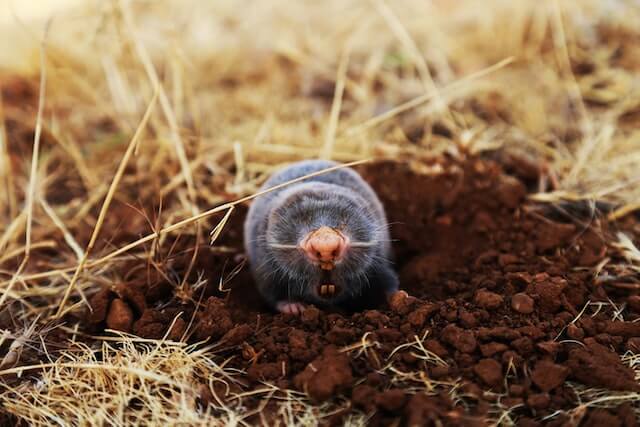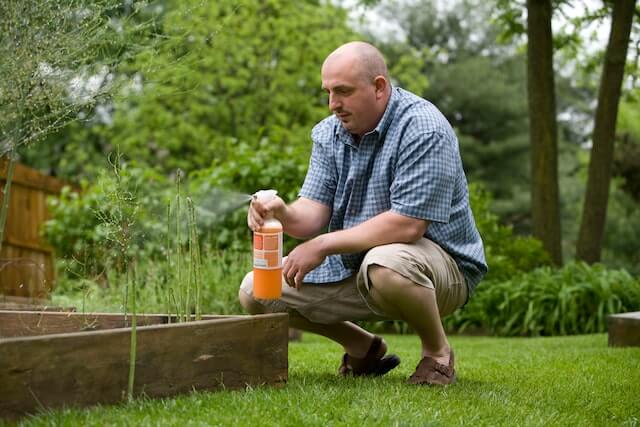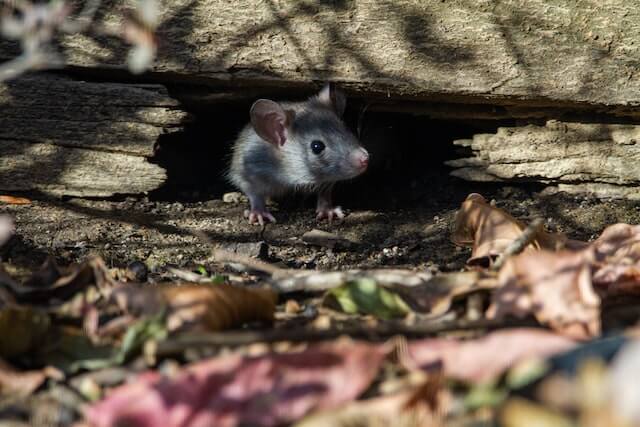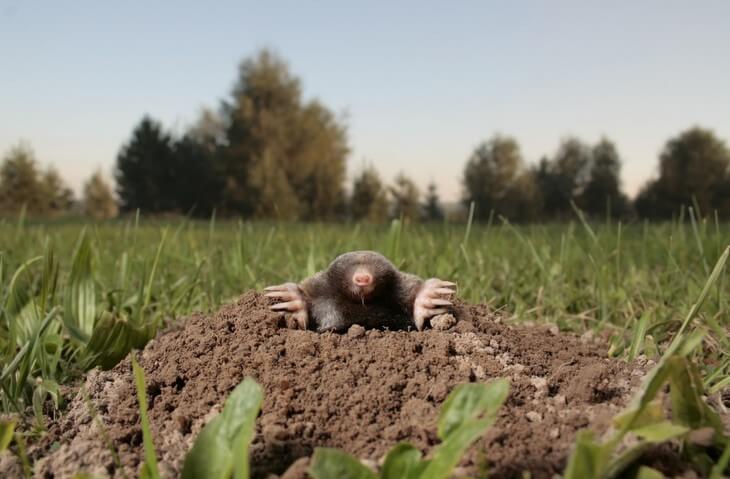Animals like moles, raccoons, and gophers might seem cute, but they’re also prevalent and damaging pests in many parts of the country. These animals can destroy your garden and wreak havoc on your home.
You may wonder how to get rid of these pests humanely and effectively. Trapping and relocating them is one of the best ways to eradicate them from your yard, attic, or anywhere else they might be hiding. There’s no need to stress if you happen to see a mole, raccoon, or gopher. With help from this guide, you’ll learn more about how to practice effective methods of pest control to give you peace of mind.
How to identify
The first step in dealing with these pests is knowing how to identify them. Read on to discover easy ways to quickly identify moles, raccoons, and gophers.
Moles
Moles eat insects but live underground and rarely venture up to the surface. Moles can dig a foot deep into the soil with their front paws and typically create a network of tunnels under gardens and yards. These solitary animals are about seven inches long and have tiny eyes and hairless snouts. A mole’s eyes and ears are covered with fur, and their ears aren’t visible. Moles also have large front feet with webbed toes, while their back feet are small with tiny claws.
Many moles choose to live in large, open fields. However, if they choose to live in your yard, they can cause serious damage. These animals aerate the soil and can destroy grass and other plants. Look for small mounds or ridges of dirt to detect their presence.
Raccoons
Raccoons are perhaps one of the most easily identifiable pests thanks to their infamous mask around the eyes and boldly striped tail. While they may seem cute at first glance, raccoons are scavengers that will infiltrate homes if they’re hungry or cold enough.
At full size, most raccoons are between two and three feet long and have stocky round bodies. These animals are one of the most prominent hosts of rabies in the United States, which can be deadly if passed on to pets and humans. Look for insulation or electrical wiring damage, which could indicate a raccoon infestation. Also, keep an eye out for trash cans that have been knocked over and/or rummaged through.
Gophers
Gophers are rodents that may initially look like squirrels due to their mannerisms and light, brown-colored fur. These animals are smaller than rats but bigger than mice and moles.
Gophers create crescent-shaped mounds and then plug the holes whenever they enter or exit their dens. They dig deep, long networks of tunnels that can go as deep as six feet. These little pests destroy trees and shrubbery; they’re especially fond of vegetables like carrots and potatoes. If you have a garden, then gophers can become a serious nuisance. Some gophers have been known to damage irrigation systems and water lines.

Types of traps and remedies
The best way to get rid of these pests is to eliminate food sources and use the right deterrents to discourage them from coming near your home, lawn, and garden.
Eliminate food sources
Moles enjoy grubs and other insects that live in the soil. Get rid of their food source by adding beneficial nematodes to the dirt, which will eventually kill the grubs. An insecticide can also work to eliminate the source of food. Without the right food, moles and gophers will eventually leave and find another place to eat. For raccoons, keep trash cans tightly secured at all times. Gophers eat vegetation, so they may be more difficult to remove using this method.
Try repellents
Castor oil may be effective in keeping moles and gophers away. This substance won’t kill the animals but may upset their digestive system, making your yard unattractive. Mix three parts castor oil with one part dish soap, then add a few tablespoons to a gallon of water. You can soak any tunnels and entry points with the mixture to keep them at bay. There are also spray, granular, and electronic repellents that you can buy for raccoons.
Planting and using barriers
Some plants may deter moles, including daffodils, marigolds, and other plants from the allium family. Use these plants to form a barrier around your yard to keep moles away. Raised beds will deter gophers so they can’t breach the perimeter of your yard. Use a netted material to put bulbs and plants in, which promotes healthy growth and keeps gophers out. For raccoons, plant thorny plants such as cucumbers and oriental poppies to keep them away.
Dig a trench
Dig a trench approximately six inches wide and two feet deep to keep moles and gophers away. Fill the trench with rocks or line it with wire mesh. Make sure the mesh doesn’t have holes any larger than ¾ inches. This simple trick should keep digging pests from making tunnels in your garden or lawn. Do the same thing around flower beds and vegetable gardens to keep gophers out.
Deterrents
Another deterrent you can try is a no-kill trap. These traps corral the animal without killing them, so you can relocate them. To make a DIY trap, dig a hole, place a bucket inside, and then pack the soil around it. Place something on top of the hole, like a piece of wood, to mark the spot. Lift the object you placed on top of the bucket often to check for any trapped animals.
Trap setting tips
If you plan to set a trap for moles or gophers, it’s vital to understand the proper methods of setting your trap to deter them.
Locate active tunnels
The first step in trapping these pests is to locate active tunnels, which are areas where the animals currently reside. Collapse a few areas along a variety of tunnels that you see and mark those spots with a small stick or flag. The following day, go outside and check these areas. If they’ve been rebuilt, it means they’re active. You can also dig into the tunnel from above and look at the bottom and sides. If these areas are smooth, then they’re likely still occupied.
Mask human scents
Animals have a heightened sense of smell, so it’s vital to mask your scent before you start trapping. Rub your hands in the dirt thoroughly to try and cover up your scent. You can also rub dirt around the trap. Avoid washing your traps with dish soap, so they continue to hold onto the natural fragrance of the soil. If possible, bait your traps with a worm or two to lure the animals in.
Mimic the path of the tunnel
When setting your traps, you’ll want them to feel like they’re a natural part of the animals’ tunnel. Bury the traps horizontally along the tunnel’s path. Once you’re done, cover the top with a bit of soil, so everything looks and feels organic. This will ensure that the pests continue on their way as usual – only this time, they’ll be trapped until you release them elsewhere.
Check your traps often
The best way to know if your traps are effective is to keep checking them frequently. The longer a mole or gopher is trapped, the more likely it may die of starvation, dehydration, or cold. Return to your trap several times a day to confirm you’ve caught something, and then you can prepare it for humane release.
Ask for help
Getting rid of moles, gophers, and raccoons isn’t always an easy task. You may need to turn to professionals for help in removing these pests from your home, lawn, and garden. Look for experienced animal control or pest control professionals near you and ask for their assistance if you’re not having any luck on your own.

You caught one, now what?
Once you’ve caught one of these pests in your trap, what’s next? Relocation is the most humane way to fix the issue without killing the animal. Here are some tips about where and when you should relocate an animal after a successful trap:
Where to relocate
The best place to relocate these animals is in an area where they have a decent chance of surviving. Look at your yard and pay attention to the types of trees you have, the soil, and other unique markers. These animals chose your yard for a reason, so let these characteristics help you find a similar area for release.
The best place is a shady area with moist, rich soil. An area near a stream or other water source is also ideal. Make sure you don’t release the mole or gopher in someone else’s yard or on a farm where they’ll just become a nuisance to someone else.
When to relocate
In order to practice humane relocation, move the animal to its new home as soon as possible. The longer it stays trapped, the more stressed it will become. A trapped animal is also deprived of food and water unless you plan to provide these items yourself. Keep the animal warm and in a dark, dry, quiet place until you’re ready to relocate it. The best rule of thumb is that the sooner you can release it, the better. If you’re not sure what to do from here, contact your local pest control company or animal control for help.
Ask for help
Before you start trapping pests, you may want to get in touch with a local wildlife rehabilitation center near you for some assistance. These organizations know where moles, gophers, and raccoons can thrive and live safely. They may also be able to offer other tips and ideas. Some may even take the animal, so you don’t need to worry about relocating it yourself.
It’s perfectly fine to ask for help from professionals who know how to deal with these types of animals in a safe and humane way.
Other types of pests
Moles, raccoons, and gophers aren’t the only pests that humans have to deal with. Here are a few other common pests, how to identify them, and how to get rid of them safely:
Mice
Mice are one of the most common household pests. These tiny rodents live in dark, secluded areas like attics or basements and can cause serious property damage. Mice can chew through wires and drywall and spread disease. Make sure you seal all food and trash and store boxes off the floor. Inspect your home regularly for any signs that mice may be present, including tiny mice droppings, gnaw marks, or holes in food packages and containers.
Rats
Rats enjoy nesting in piles of trash or basements and can gnaw on everything from plastic containers to lead pipes. These large rodents are notorious for spreading a variety of diseases to animals and humans. Though they’re large, some rats can fit through a hole as small as the size of a quarter. Look around your home’s exterior and seal off any gaps or holes with caulk. Make sure your basement is dry and free of excess moisture and humidity.
Cockroaches
Cockroaches, namely German cockroaches, are a very common pest that can wreak havoc on your home and peace of mind. These insects are dark brown in color and love to live in moist, cluttered areas. They often live in the kitchen and bathroom, thanks to easy food and water sources. Keep your kitchen clean and free of food crumbs and trash, and vacuum regularly. Look under sinks and appliances often and follow proper pest control measures to keep them out of your home.
Spiders
There are hundreds of spider species, but the brown recluse is one of the most dangerous to humans. These spiders typically live in dark areas like attics, closets, basements, and crawl spaces, and they love cardboard boxes. Make sure you keep all trees and shrubs neatly trimmed away from your home, and remove any tree limbs hanging above the roof. Store clothes and shoes in airtight containers and look for areas where spiders might want to make a web, then clean and clear those areas thoroughly.

Whether you’re dealing with moles, gophers, raccoons, or some other kind of unpleasant pest, it’s important to know what to do so you can get rid of them safely. When it comes to small mammals and rodents, trapping and relocation is the best and most humane way to remedy the issue. Keep the tips from this guide in mind if you’re facing a pest problem. With a bit of patience and diligence, you’ll be able to easily reduce or eliminate the number of pests from your home, lawn, and garden.




